The Lost Symbol Read online
Page 3
The world’s largest and most technologically advanced museum is also one of the world’s best-kept secrets. It houses more pieces than the Hermitage, the Vatican Museum, and the New York Metropolitan… combined. Yet despite its magnificent collection, few members of the public are ever invited inside its heavily guarded walls.
Located at 4210 Silver Hill Road just outside of Washington, D.C., the museum is a massive zigzag-shaped edifice constructed of five interconnected pods — each pod larger than a football field. The building’s bluish metal exterior barely hints at the strangeness within — a six-hundred-thousand-square-foot alien world that contains a “dead zone,” a “wet pod,” and more than twelve miles of storage cabinets.
Tonight, scientist Katherine Solomon was feeling unsettled as she drove her white Volvo up to the building’s main security gate.
The guard smiled. “Not a football fan, Ms. Solomon?” He lowered the volume on the Redskins play-off pregame show.
Katherine forced a tense smile. “It’s Sunday night.”
“Oh, that’s right. Your meeting.”
“Is he here yet?” she asked anxiously.
He glanced down at his paperwork. “I don’t see him on the log.”
“I’m early.” Katherine gave a friendly wave and continued up the winding access road to her usual parking spot at the bottom of the small, two-tiered lot. She began collecting her things and gave herself a quick check in the rearview mirror — more out of force of habit than actual vanity.
Katherine Solomon had been blessed with the resilient Mediterranean skin of her ancestry, and even at fifty years old she had a smooth olive complexion. She used almost no makeup and wore her thick black hair unstyled and down. Like her older brother, Peter, she had gray eyes and a slender, patrician elegance.
You two might as well be twins, people often told them.
Their father had succumbed to cancer when Katherine was only seven, and she had little memory of him. Her brother, eight years Katherine’s senior and only fifteen when their father died, had begun his journey toward becoming the Solomon patriarch much sooner than anyone had ever dreamed. As expected, though, Peter had grown into the role with the dignity and strength befitting their family name. To this day, he still watched over Katherine as though they were just kids.
Despite her brother’s occasional prodding, and no shortage of suitors, Katherine had never married. Science had become her life partner, and her work had proven more fulfilling and exciting than any man could ever hope to be. Katherine had no regrets.
Her field of choice — Noetic Science — had been virtually unknown when she first heard of it, but in recent years it had started opening new doors of understanding into the power of the human mind.
Our untapped potential is truly shocking.
Katherine’s two books on Noetics had established her as a leader in this obscure field, but her most recent discoveries, when published, promised to make Noetic Science a topic of mainstream conversation around the world.
Tonight, however, science was the last thing on her mind. Earlier in the day, she had received some truly upsetting information relating to her brother. I still can’t believe it’s true. She’d thought of nothing else all afternoon.
A pattering of light rain drummed on her windshield, and Katherine quickly gathered her things to get inside. She was about to step out of her car when her cell phone rang.
She checked the caller ID and inhaled deeply.
Then she tucked her hair behind her ears and settled in to take the call.
Six miles away, Mal’akh was moving through the corridors of the U.S. Capitol Building with a cell phone pressed to his ear. He waited patiently as the line rang.
Finally, a woman’s voice answered. “Yes?”
“We need to meet again,” Mal’akh said.
There was a long pause. “Is everything all right?”
“I have new information,” Mal’akh said.
“Tell me.”
Mal’akh took a deep breath. “That which your brother believes is hidden in D.C.…?”
“Yes?”
“It can be found.”
Katherine Solomon sounded stunned. “You’re telling me — it is real?”
Mal’akh smiled to himself. “Sometimes a legend that endures for centuries… endures for a reason.”
CHAPTER 6
“Is this as close as you can get?” Robert Langdon felt a sudden wave of anxiety as his driver parked on First Street, a good quarter mile from the Capitol Building.
“Afraid so,” the driver said. “Homeland Security. No vehicles near landmark buildings anymore. I’m sorry, sir.”
Langdon checked his watch, startled to see it was already 6:50. A construction zone around the National Mall had slowed them down, and his lecture was to begin in ten minutes.
“Weather’s turning,” the driver said, hopping out and opening Langdon’s door for him. “You’ll want to hurry.” Langdon reached for his wallet to tip the driver, but the man waved him off. “Your host already added a very generous tip to the charge.”
Typical Peter, Langdon thought, gathering his things. “Okay, thanks for the ride.”
The first few raindrops began to fall as Langdon reached the top of the gracefully arched concourse that descended to the new “underground” visitors’ entrance.
The Capitol Visitor Center had been a costly and controversial project. Described as an underground city to rival parts of Disney World, this subterranean space reportedly provided over a half-million square feet of space for exhibits, restaurants, and meeting halls.
Langdon had been looking forward to seeing it, although he hadn’t anticipated quite this long a walk. The skies were threatening to open at any moment, and he broke into a jog, his loafers offering almost no traction on the wet cement. I dressed for a lecture, not a four-hundred-yard downhill dash through the rain!
When he arrived at the bottom, he was breathless and panting. Langdon pushed through the revolving door, taking a moment in the foyer to catch his breath and brush off the rain. As he did, he raised his eyes to the newly completed space before him.
Okay, I’m impressed.
The Capitol Visitor Center was not at all what he had expected. Because the space was underground, Langdon had been apprehensive about passing through it. A childhood accident had left him stranded at the bottom of a deep well overnight, and Langdon now lived with an almost crippling aversion to enclosed spaces. But this underground space was… airy somehow. Light. Spacious.
The ceiling was a vast expanse of glass with a series of dramatic light fixtures that threw a muted glow across the pearl-colored interior finishes.
Normally, Langdon would have taken a full hour in here to admire the architecture, but with five minutes until showtime, he put his head down and dashed through the main hall toward the security checkpoint and escalators. Relax, he told himself. Peter knows you’re on your way. The event won’t start without you.
At the security point, a young Hispanic guard chatted with him while Langdon emptied his pockets and removed his vintage watch.
“Mickey Mouse?” the guard said, sounding mildly amused.
Langdon nodded, accustomed to the comments. The collector’s edition Mickey Mouse watch had been a gift from his parents on his ninth birthday. “I wear it to remind me to slow down and take life less seriously.”
“I don’t think it’s working,” the guard said with a smile. “You look like you’re in a serious hurry.”
Langdon smiled and put his daybag through the X-ray machine. “Which way to the Statuary Hall?”
The guard motioned toward the escalators. “You’ll see the signs.”
“Thanks.” Langdon grabbed his bag off the conveyor and hurried on.
As the escalator ascended, Langdon took a deep breath and tried to gather his thoughts. He gazed up through the rain-speckled glass ceiling at the mountainous form of the illuminated Capitol Dome overhead. It was an astonishing building
. High atop her roof, almost three hundred feet in the air, the Statue of Freedom peered out into the misty darkness like a ghostly sentinel. Langdon always found it ironic that the workers who hoisted each piece of the nineteen-and-a-half-foot bronze statue to her perch were slaves — a Capitol secret that seldom made the syllabi of high school history classes.
This entire building, in fact, was a treasure trove of bizarre arcana that included a “killer bathtub” responsible for the pneumonic murder of Vice President Henry Wilson, a staircase with a permanent bloodstain over which an inordinate number of guests seemed to trip, and a sealed basement chamber in which workers in 1930 discovered General John Alexander Logan’s long-deceased stuffed horse.
No legends were as enduring, however, as the claims of thirteen different ghosts that haunted this building. The spirit of city designer Pierre L’Enfant frequently was reported wandering the halls, seeking payment of his bill, now two hundred years overdue. The ghost of a worker who fell from the Capitol Dome during construction was seen wandering the corridors with a tray of tools. And, of course, the most famous apparition of all, reported numerous times in the Capitol basement — an ephemeral black cat that prowled the substructure’s eerie maze of narrow passageways and cubicles.
Langdon stepped off the escalator and again checked his watch. Three minutes. He hurried down the wide corridor, following the signs toward the Statuary Hall and rehearsing his opening remarks in his head. Langdon had to admit that Peter’s assistant had been correct; this lecture topic would be a perfect match for an event hosted in Washington, D.C., by a prominent Mason.
It was no secret that D.C. had a rich Masonic history. The cornerstone of this very building had been laid in a full Masonic ritual by George Washington himself. This city had been conceived and designed by Master Masons — George Washington, Ben Franklin, and Pierre L’Enfant — powerful minds who adorned their new capital with Masonic symbolism, architecture, and art.
Of course, people see in those symbols all kinds of crazy ideas.
Many conspiracy theorists claimed the Masonic forefathers had concealed powerful secrets throughout Washington along with symbolic messages hidden in the city’s layout of streets. Langdon never paid any attention. Misinformation about the Masons was so commonplace that even educated Harvard students seemed to have surprisingly warped conceptions about the brotherhood.
Last year, a freshman had rushed wild-eyed into Langdon’s classroom with a printout from the Web. It was a street map of D.C. on which certain streets had been highlighted to form various shapes — satanic pentacles, a Masonic compass and square, the head of Baphomet — proof apparently that the Masons who designed Washington, D.C., were involved in some kind of dark, mystical conspiracy.
“Fun,” Langdon said, “but hardly convincing. If you draw enough intersecting lines on a map, you’re bound to find all kinds of shapes.”
“But this can’t be coincidence!” the kid exclaimed.
Langdon patiently showed the student that the same exact shapes could be formed on a street map of Detroit.
The kid seemed sorely disappointed.
“Don’t be disheartened,” Langdon said. “Washington does have some incredible secrets… just none on this street map.”
The young man perked up. “Secrets? Like what?”
“Every spring I teach a course called Occult Symbols. I talk a lot about D.C. You should take the course.”
“Occult symbols!” The freshman looked excited again. “So there are devil symbols in D.C.!”
Langdon smiled. “Sorry, but the word occult, despite conjuring images of devil worship, actually means ‘hidden’ or ‘obscured.’ In times of religious oppression, knowledge that was counterdoctrinal had to be kept hidden or ‘occult,’ and because the church felt threatened by this, they redefined anything ‘occult’ as evil, and the prejudice survived.”
“Oh.” The kid slumped.
Nonetheless, that spring, Langdon spotted the freshman seated in the front row as five hundred students bustled into Harvard’s Sanders Theatre, a hollow old lecture hall with creaking wooden benches.
“Good morning, everybody,” Langdon shouted from the expansive stage. He turned on a slide projector, and an image materialized behind him. “As you’re getting settled, how many of you recognize the building in this picture?”
“U.S. Capitol!” dozens of voices called out in unison. “Washington, D.C.!”
“Yes. There are nine million pounds of ironwork in that dome. An unparalleled feat of architectural ingenuity for the 1850s.”
“Awesome!” somebody shouted.
Langdon rolled his eyes, wishing somebody would ban that word. “Okay, and how many of you have ever been to Washington?”
A scattering of hands went up.
“So few?” Langdon feigned surprise. “And how many of you have been to Rome, Paris, Madrid, or London?”
Almost all the hands in the room went up.
As usual. One of the rites of passage for American college kids was a summer with a Eurorail ticket before the harsh reality of real life set in. “It appears many more of you have visited Europe than have visited your own capital. Why do you think that is?”
“No drinking age in Europe!” someone in back shouted.
Langdon smiled. “As if the drinking age here stops any of you?”
Everyone laughed.
It was the first day of school, and the students were taking longer than usual to get settled, shifting and creaking in their wooden pews. Langdon loved teaching in this hall because he always knew how engaged the students were simply by listening to how much they fidgeted in their pews.
“Seriously,” Langdon said, “Washington, D.C., has some of the world’s finest architecture, art, and symbolism. Why would you go overseas before visiting your own capital?”
“Ancient stuff is cooler,” someone said.
“And by ancient stuff,” Langdon clarified, “I assume you mean castles, crypts, temples, that sort of thing?”
Their heads nodded in unison.
“Okay. Now, what if I told you that Washington, D.C., has every one of those things? Castles, crypts, pyramids, temples… it’s all there.”
The creaking diminished.
“My friends,” Langdon said, lowering his voice and moving to the front of the stage, “in the next hour, you will discover that our nation is overflowing with secrets and hidden history. And exactly as in Europe, all of the best secrets are hidden in plain view.”
The wooden pews fell dead silent.
Gotcha.
Langdon dimmed the lights and called up his second slide. “Who can tell me what George Washington is doing here?”
The slide was a famous mural depicting George Washington dressed in full Masonic regalia standing before an odd-looking contraption — a giant wooden tripod that supported a rope-and-pulley system from which was suspended a massive block of stone. A group of well-dressed onlookers stood around him.
“Lifting that big block of stone?” someone ventured.
Langdon said nothing, preferring that a student make the correction if possible.
“Actually,” another student offered, “I think Washington is lowering the rock. He’s wearing a Masonic costume. I’ve seen pictures of Masons laying cornerstones before. The ceremony always uses that tripod thing to lower the first stone.”
“Excellent,” Langdon said. “The mural portrays the Father of Our Country using a tripod and pulley to lay the cornerstone of our Capitol Building on September 18, 1793, between the hours of eleven fifteen and twelve thirty.” Langdon paused, scanning the class. “Can anyone tell me the significance of that date and time?”
Silence.
“What if I told you that precise moment was chosen by three famous Masons — George Washington, Benjamin Franklin, and Pierre L’Enfant, the primary architect for D.C.?”
More silence.
“Quite simply, the cornerstone was set at that date and time because, among ot
her things, the auspicious Caput Draconis was in Virgo.”
Everyone exchanged odd looks.
“Hold on,” someone said. “You mean… like astrology?”
“Exactly. Although a different astrology than we know today.”
A hand went up. “You mean our Founding Fathers believed in astrology?”
Langdon grinned. “Big-time. What would you say if I told you the city of Washington, D.C., has more astrological signs in its architecture than any other city in the world — zodiacs, star charts, cornerstones laid at precise astrological dates and times? More than half of the framers of our Constitution were Masons, men who strongly believed that the stars and fate were intertwined, men who paid close attention to the layout of the heavens as they structured their new world.”
“But that whole thing about the Capitol cornerstone being laid while Caput Draconis was in Virgo — who cares? Can’t that just be coincidence?”
“An impressive coincidence considering that the cornerstones of the three structures that make up Federal Triangle — the Capitol, the White House, the Washington Monument — were all laid in different years but were carefully timed to occur under this exact same astrological condition.”
Langdon’s gaze was met by a room full of wide eyes. A number of heads dipped down as students began taking notes.
A hand in back went up. “Why did they do that?”
Langdon chuckled. “The answer to that is an entire semester’s worth of material. If you’re curious, you should take my mysticism course. Frankly, I don’t think you guys are emotionally prepared to hear the answer.”
“What?” the person shouted. “Try us!”
Langdon made a show of considering it and then shook his head, toying with them. “Sorry, I can’t do that. Some of you are only freshmen. I’m afraid it might blow your minds.”
“Tell us!” everyone shouted.
Langdon shrugged. “Perhaps you should join the Masons or Eastern Star and learn about it from the source.”
“We can’t get in,” a young man argued. “The Masons are like a supersecret society!”
“Supersecret? Really?” Langdon remembered the large Masonic ring that his friend Peter Solomon wore proudly on his right hand. “Then why do Masons wear obvious Masonic rings, tie clips, or pins? Why are Masonic buildings clearly marked? Why are their meeting times in the newspaper?” Langdon smiled at all the puzzled faces. “My friends, the Masons are not a secret society… they are a society with secrets.”
“Same thing,” someone muttered.
“Is it?” Langdon challenged. “Would you consider Coca-Cola a secret society?”
“Of course not,” the student said.
“Well, what if you knocked on the door of corporate headquarters and asked for the recipe for Classic Coke?”
“They’d never tell you.”
“Exactly. In order to learn Coca-Cola’s deepest secret, you would need to join the company, work for many years, prove you were trustworthy, and eventually rise to the upper echelons of the company, where that information might be shared with you. Then you would be sworn to secrecy.”
“So you’re saying Freemasonry is like a corporation?”
“Only insofar as they have a strict hierarchy and they take secrecy very seriously.”
“My uncle is a Mason,” a young woman piped up. “And my aunt hates it because he won’t talk about it with her. She says Masonry is some kind of strange religion.”
“A common misperception.”
“It’s not a religion?”
“Give it the litmus test,” Langdon said. “Who here has taken Professor Witherspoon’s comparative religion course?”

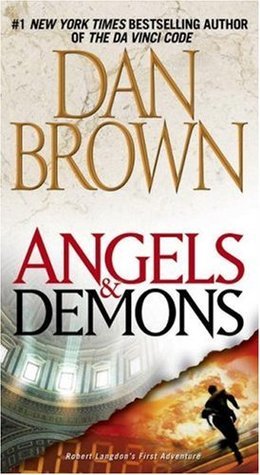 Angels & Demons
Angels & Demons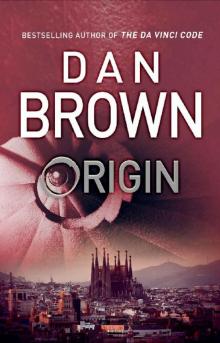 Origin
Origin The Da Vinci Code
The Da Vinci Code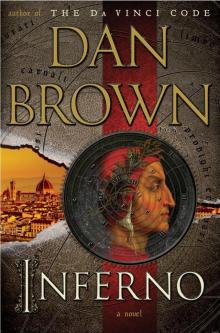 Inferno
Inferno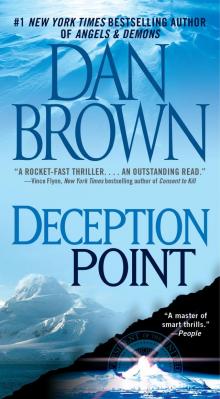 Deception Point
Deception Point Digital Fortress
Digital Fortress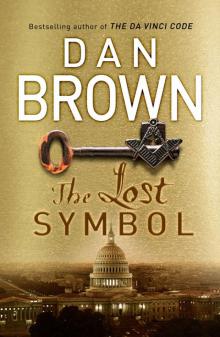 The Lost Symbol
The Lost Symbol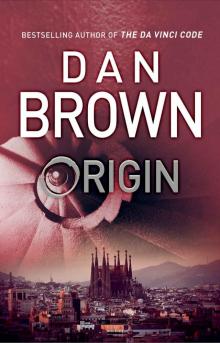 Origin: (Robert Langdon Book 5)
Origin: (Robert Langdon Book 5)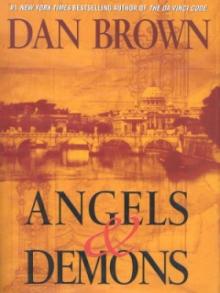 Angles & Demons
Angles & Demons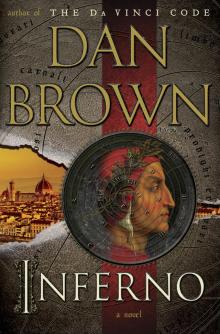 Inferno: A Novel
Inferno: A Novel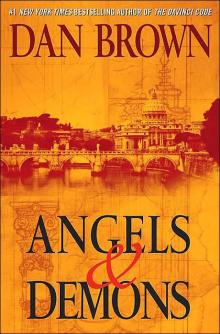 Angels & Demons rl-1
Angels & Demons rl-1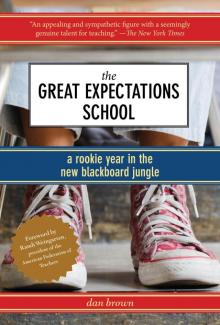 The Great Expectations School
The Great Expectations School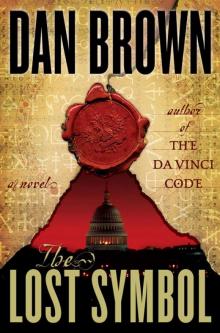 The Lost Symbol rl-3
The Lost Symbol rl-3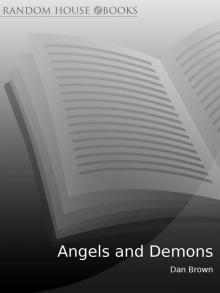 Angels and Demons
Angels and Demons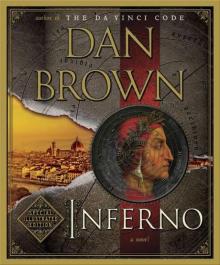 Inferno: Special Illustrated Edition: Featuring Robert Langdon
Inferno: Special Illustrated Edition: Featuring Robert Langdon